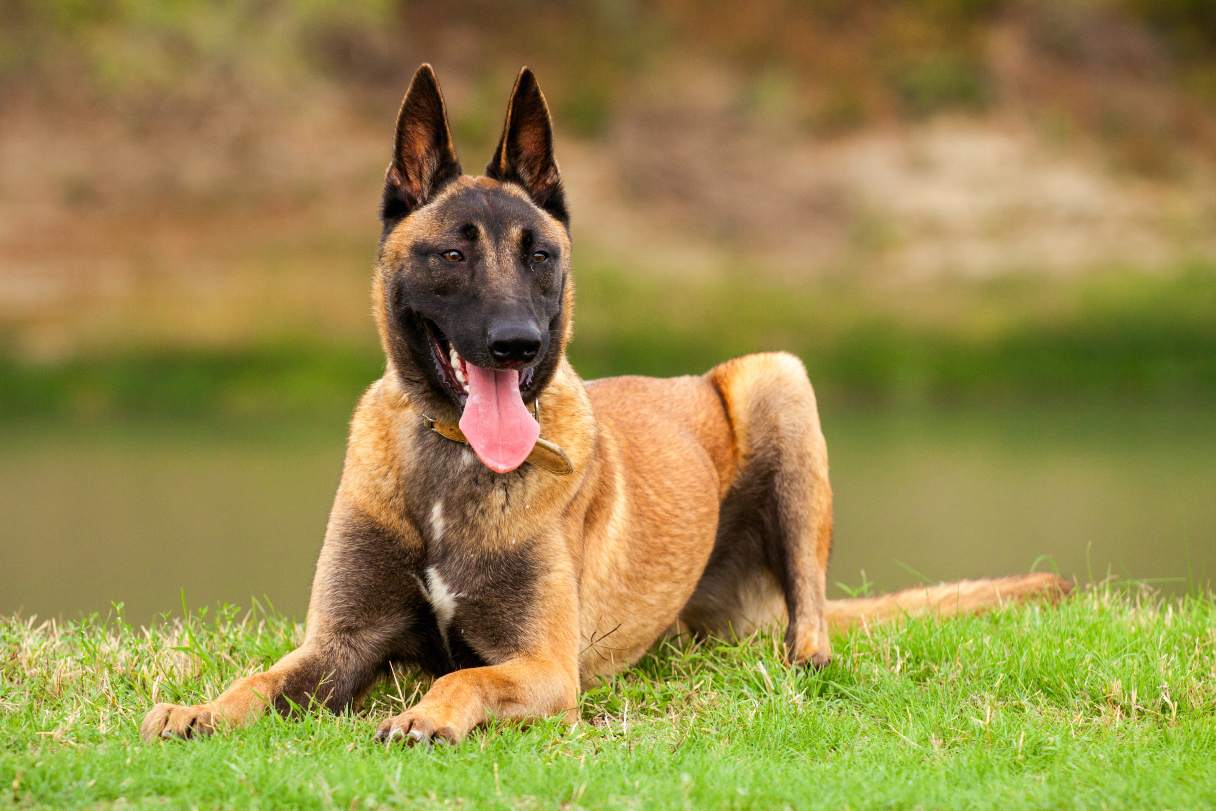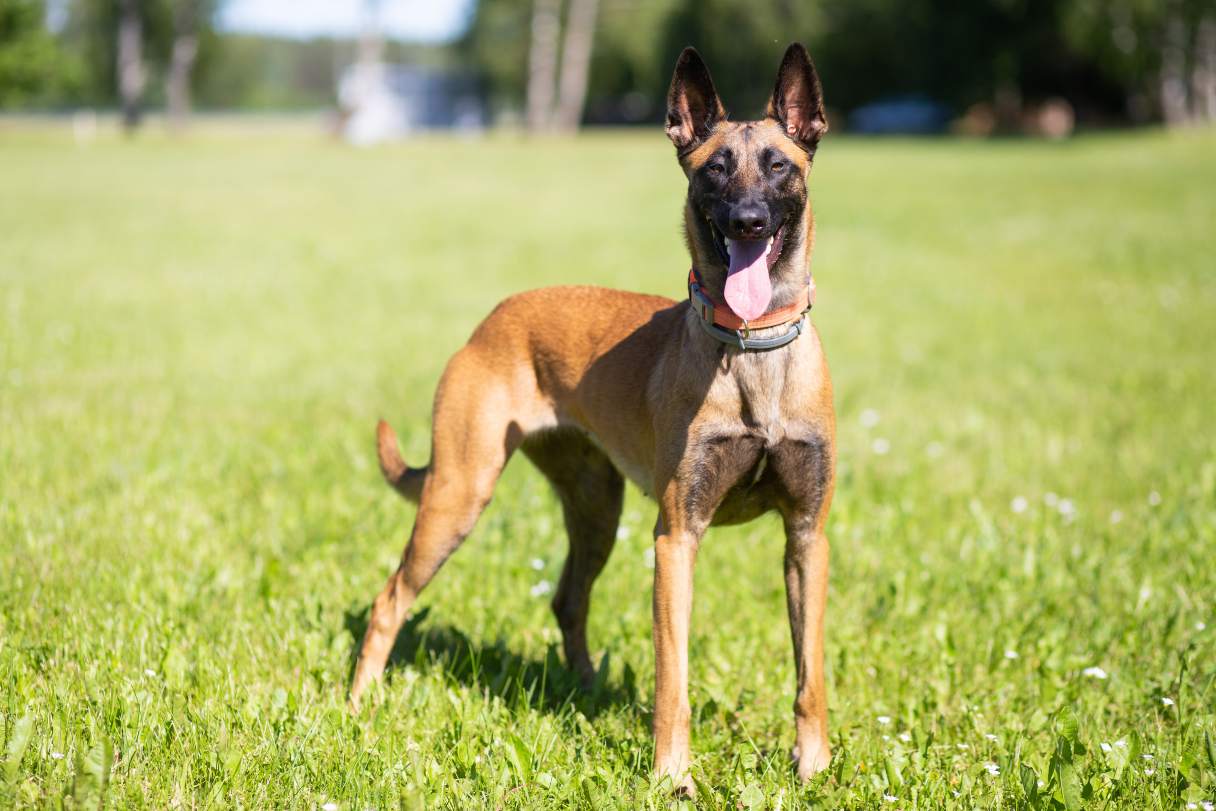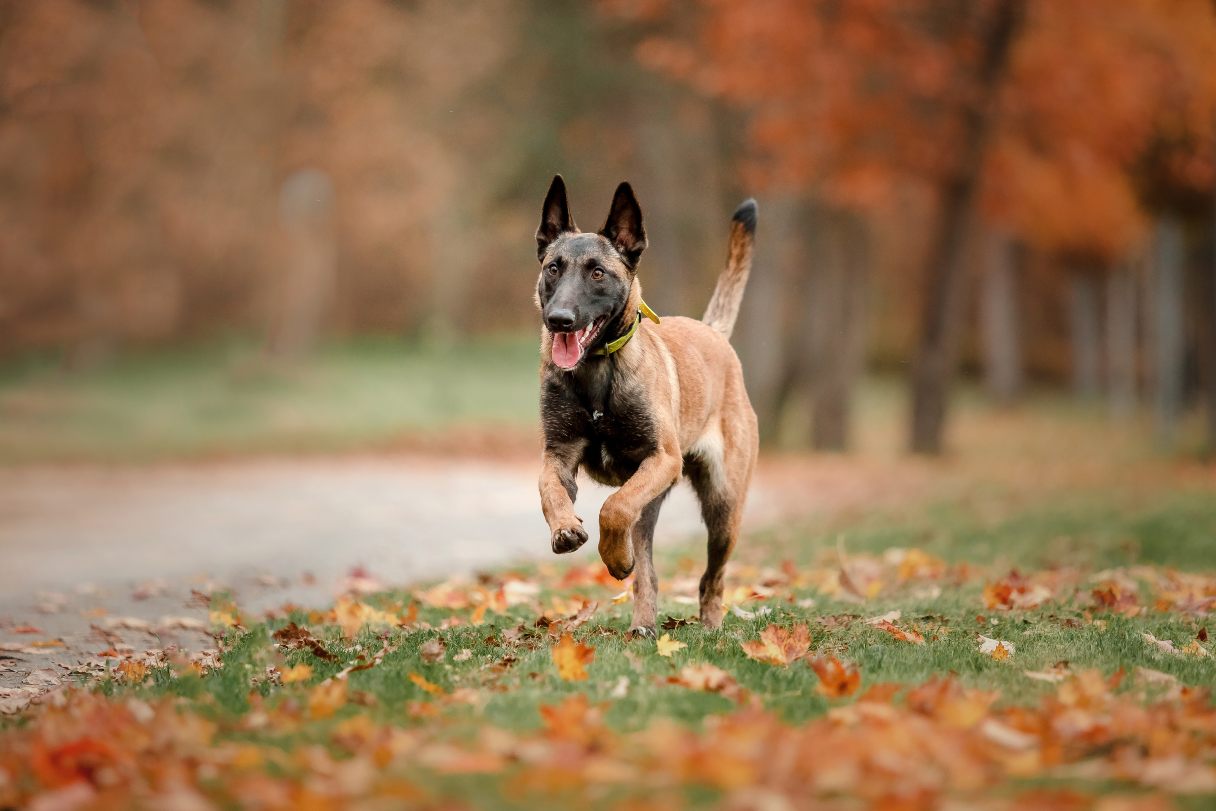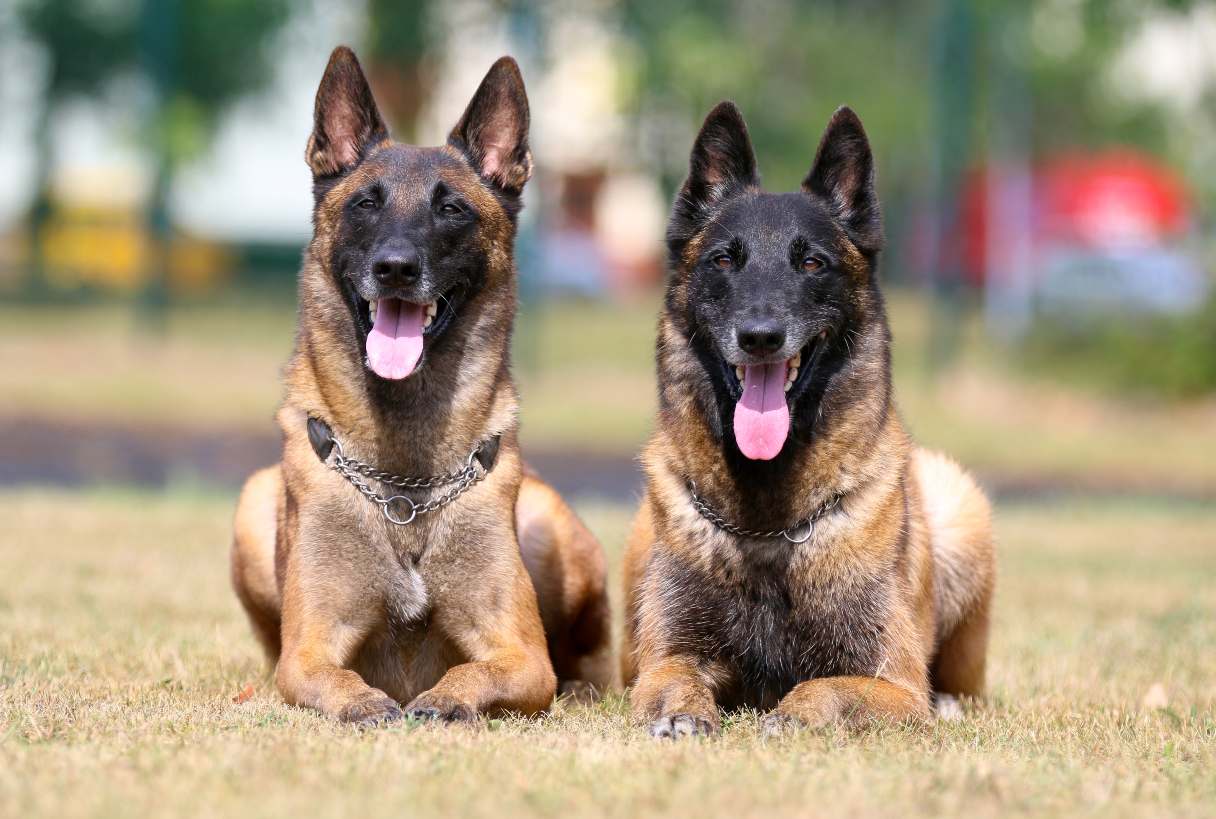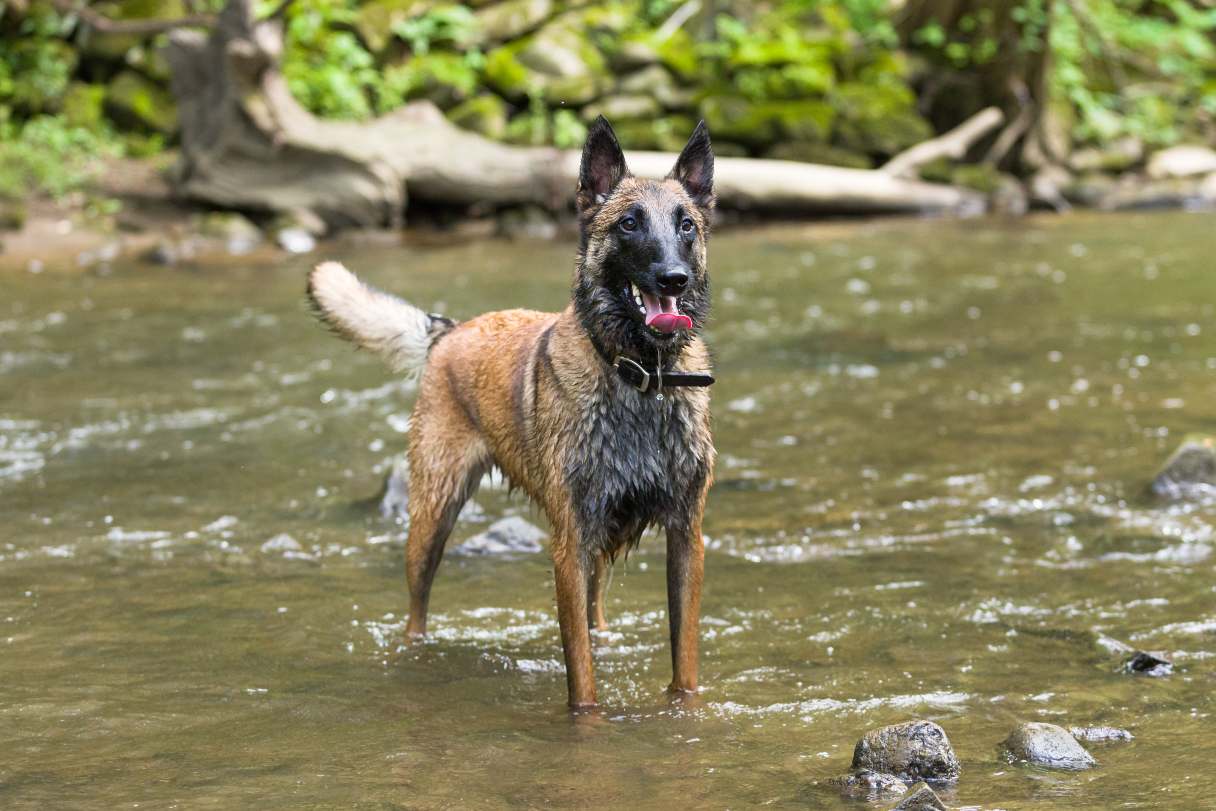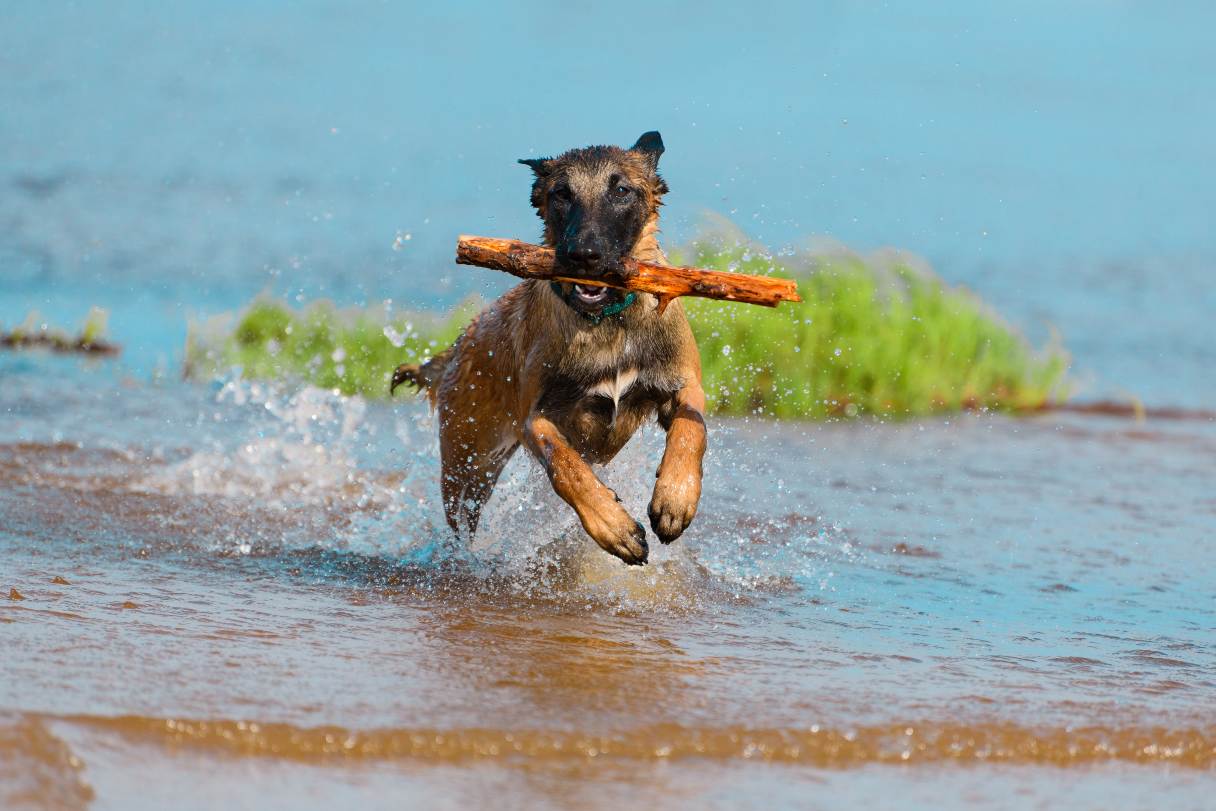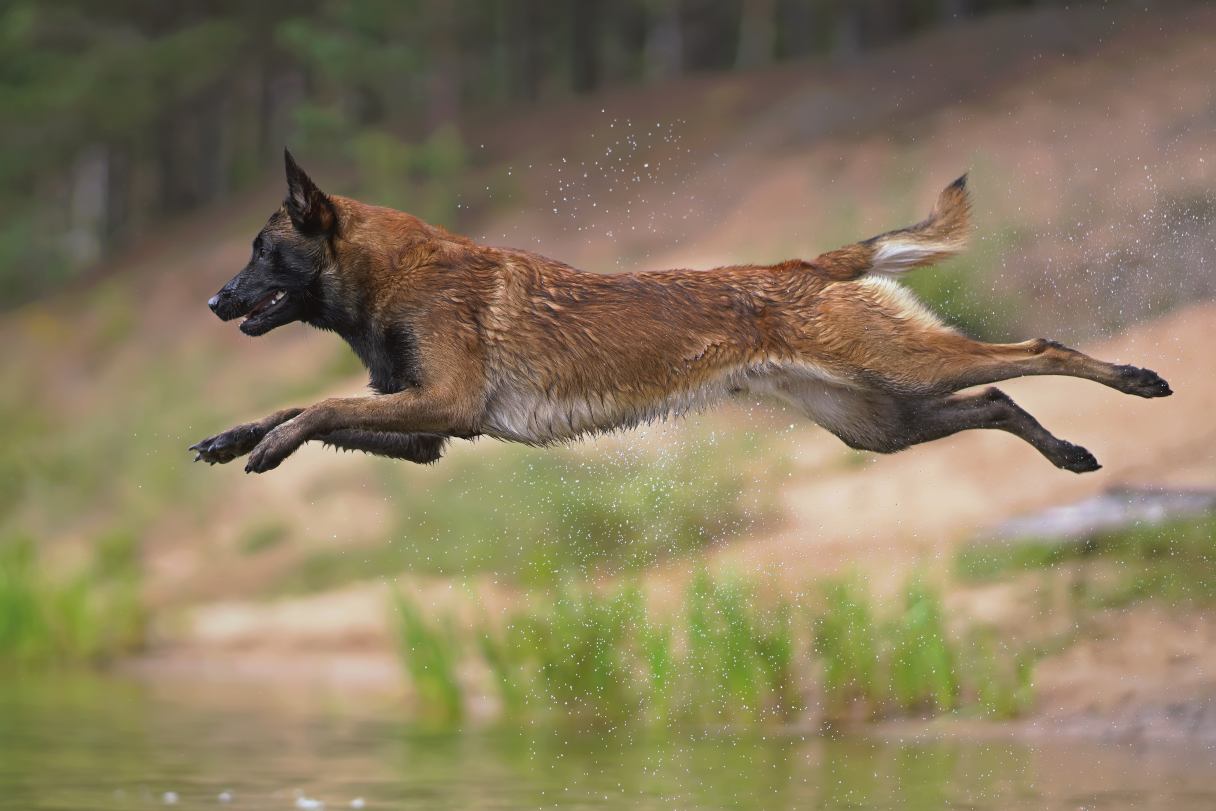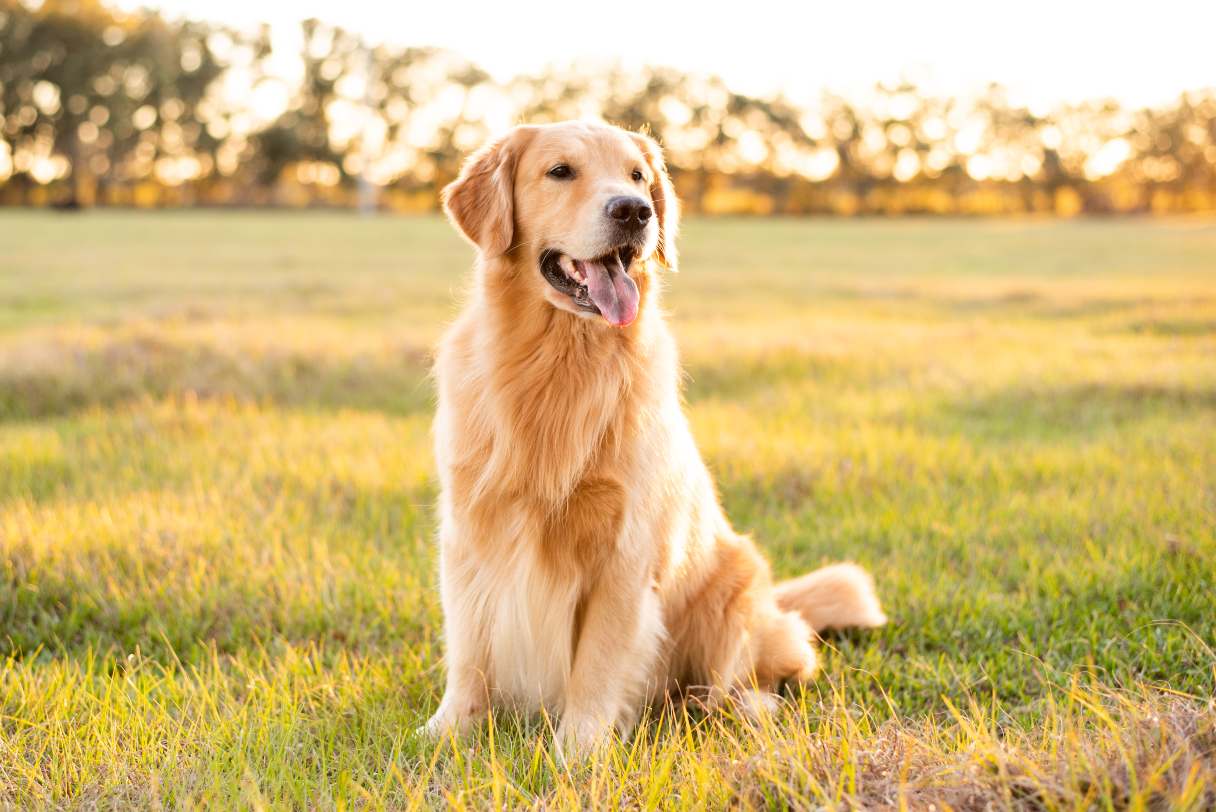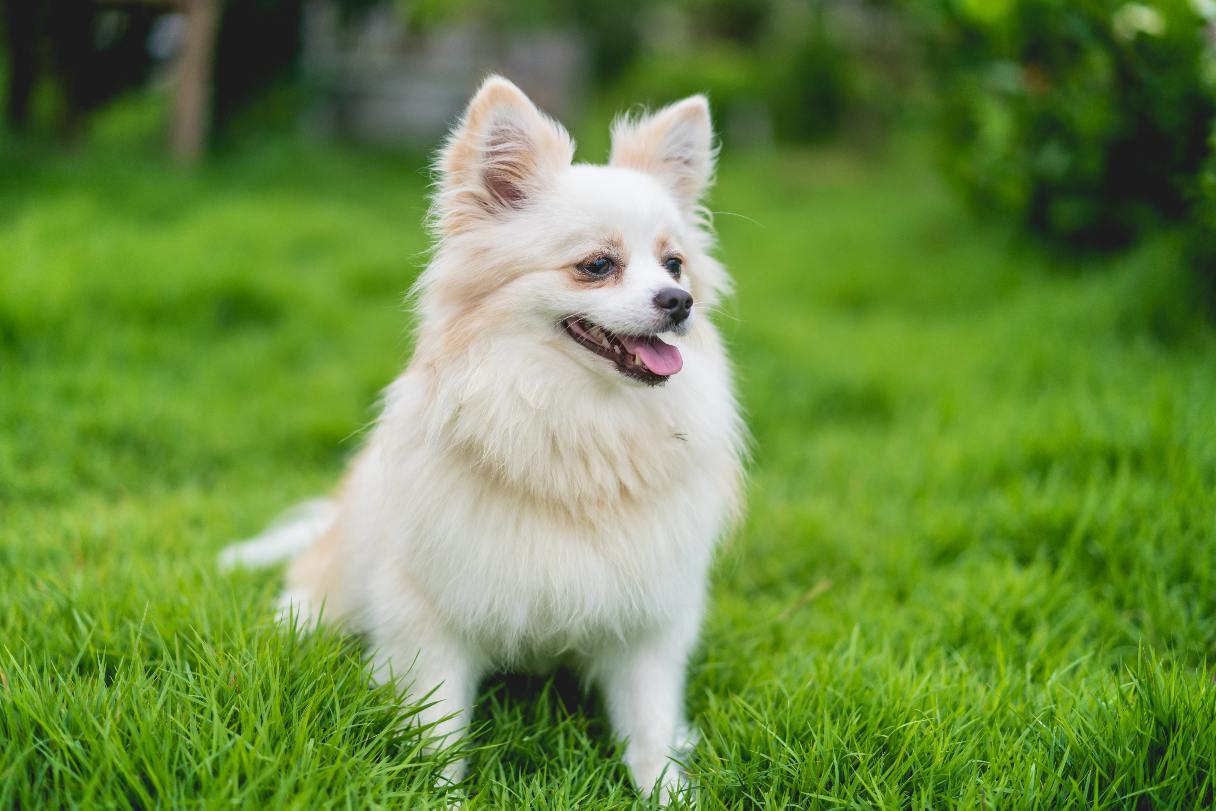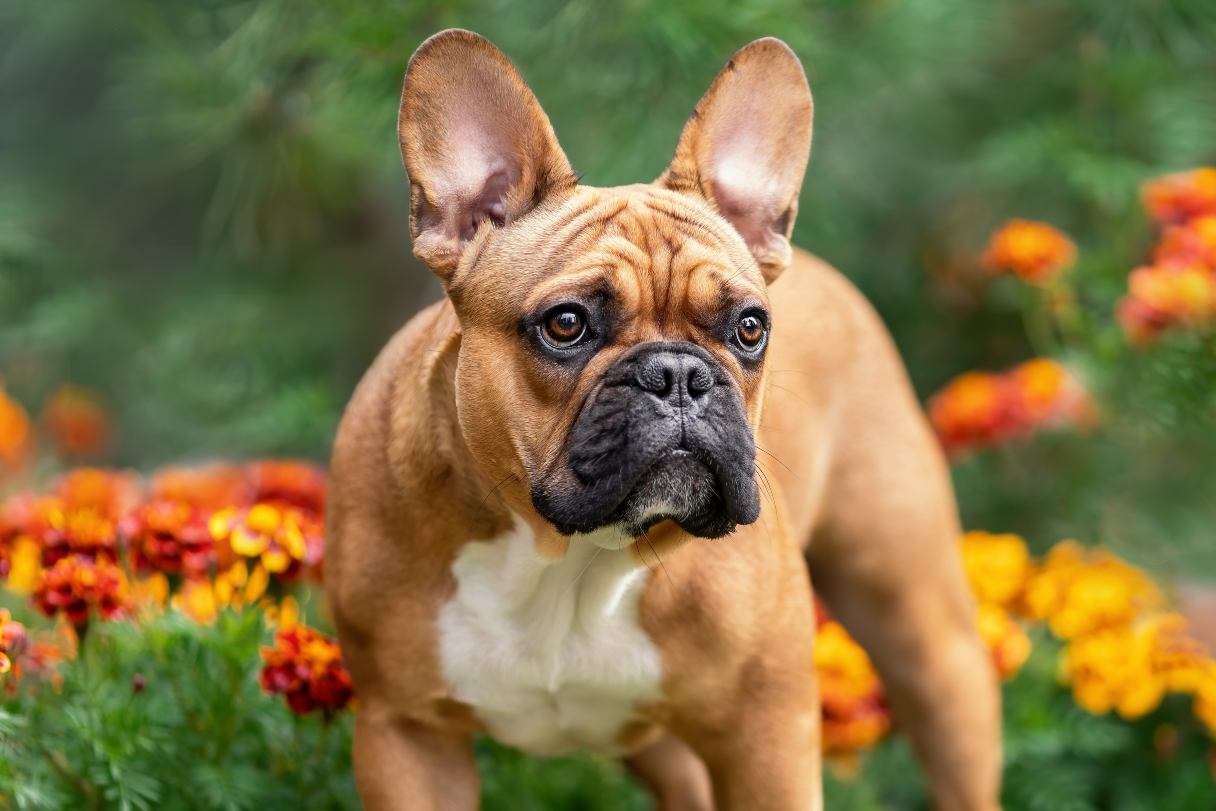Often mistaken for a German shepherd, the Belgian Malinois is a similar but separate herding breed — think of it as a more compact and energetic version of its German counterpart. Intelligent, confident and skilled at a wide range of tasks and sports, Mals are highly driven not just to work, but to work hard at being the best at what they do.
Find out what this energetic breed is like to live with and take care of, as well as their training, exercise and wellness needs.
About the Belgian Malinois
First bred near Belgium's city of Mechelen (Malines in French) in the late 19th century, the Belgian Malinois was originally developed to be a versatile farm helper, doing everything from guarding the farm to pulling carts to helping move small flocks of livestock.1 The Malinois is one of four closely related Belgian herding breeds developed around the same time.2 While many countries classify these dogs as variations on a single breed called the Belgian sheepdog, the American Kennel Club (AKC) has recognized the Malinois as a distinct breed since 1959.2
Mals were bred to be high-performing hard workers, and they wasted no time becoming popular with ranchers and sheepherders after arriving in the United States in 1911. However, World War II halted the import of these dogs to the U.S., causing the breed's numbers to decline. It wasn't until the 1960s that fanciers of the breed began to rebuild the Malinois population.2
Today’s Mals are still highly sought after for their herding abilities, but they’re also one of the top breeds for police and military K-9 units.2 Mals are even deployed with the Navy SEALs, including one courageous Mal who assisted SEAL Team 6 in their mission to capture Osama bin Laden.3
Read Related Articles (Place on all 3)Belgian Malinois Appearance
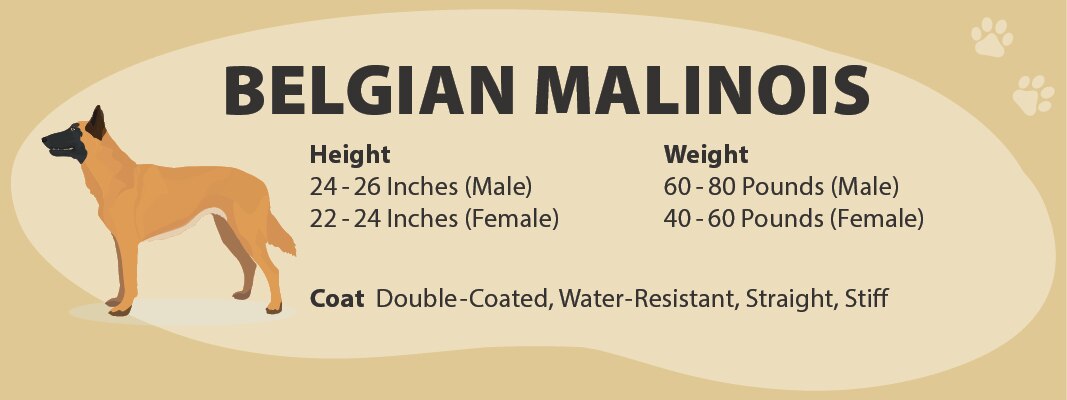
Male Malinois stand between 24 and 26 inches tall at the shoulder and weigh 60 to 80 pounds. Females are a bit smaller, standing 22 to 24 inches and weighing 40 to 60 pounds.2
Mals are squarely built dogs, with a torso as long from chest to rump as they are tall. They’re lean and strong without any bulkiness.4
The face of a Mal is similar to that of a German shepherd, with a long, angular muzzle and intelligent, expressive eyes.4 The ears sit high and erect and are more of a true triangle than those of the German shepherd.5 The long, brushy tail is carried even with the back with a happy upward curve when in motion.4
The double coat of the Malinois has a dense undercoat beneath short, straight hair that is fairly stiff and water-resistant. Coloring ranges from fawn to deep mahogany, with a black mask on the face and black shading on the ears and chest. They may have a bit of white on the chest and the tips of the toes.4
Belgian Malinois Temperament
Three words that can sum up the Malinois are intelligent, loyal and intense. Bred to work diligently and guard livestock, Mals have a high work drive and thrive when they have a job to do.2 They also make excellent guardians and protectors, a role they take seriously.5 They show that same type of all-out dedication in performing any task they’re given, even if it’s just chasing a stick.6
Belgian Malinois were meant to be a work partner with humans as well as a companion. They form extremely tight bonds with their people and tend to be responsive to direction and eager to please.4 They also crave human company and want to be with their owners as much as they want to work.2
Mals are highly intelligent and easy to train, but it’s best if they can start obedience training early in puppyhood.7 They also need extensive socialization, starting as early and as frequently as possible.7 Consistent training, socialization and plenty of daily exercise and mental stimulation should be daily priorities throughout a Malinois’ life to prevent boredom and destructive behavior.8
Living With Belgian Malinois
Malinois can make wonderful guardians, helpers and best friends for the right owners, but their high energy and need for constant activity can make them a lot for some people to handle. Here’s what you need to know about living with and caring for a Belgian Malinois.
Who they’re best for
The Malinois needs an energetic and active owner who can commit to training, exercising and engaging with their Mal on a daily basis. A Mal will want to be by your side and be involved in whatever you’re doing. They require consistent training to help them channel all their energy into productive pursuits and keep their impulses under control.7
Mals are best suited for those with some experience handling large, energetic dogs, and even better for those familiar with the breed. Many novice Malinois owners have been caught off guard by the Mal’s intensity and found themselves overwhelmed. This breed has strong workaholic tendencies and a desire to be the best at everything.6
A Mal can get along well with children and other pets provided they’re introduced to the family as a puppy. An older Mal that has had plenty of exposure to children, cats and other dogs can also be taught to get along, but they should be introduced slowly, with lots of supervision. Mals have a high prey drive and might impulsively chase fast-moving objects, including children, cats and other animals.9
Living space
Mals should live indoors with their people, but they also need a lot of time outdoors to exercise. Unless you can jog five miles a day with your Mal, it’s best if they have a fenced yard where they can run and play in safety.7
Exercise and activity
Needless to say, Mals are incredibly energetic. Getting them enough exercise can be a challenge. They make a great exercise buddy for runners, hikers and cyclers. Otherwise, expect to play a lot of backyard fetch or catch with your Mal in addition to taking them on regular walks.7
Many Mal owners find that enrolling their dogs in canine sports like agility, herding or tracking is one of the best ways to get them all of the exercise and mental engagement they need. Mals also excel at Schutzhund — that is, protection dog — sports.2
The Malinois experiences a heavy shedding season twice a year, requiring daily brushing to keep the hair under control. Otherwise, their coat is low-maintenance, needing only occasional brushing and baths as needed. Regular nail trimming is essential to prevent foot problems. As with most breeds, it’s best to get them used to nail trimming when they’re puppies.2 Whenever you brush your Mal, it’s also a good idea to clean their ears and check them for possible signs of infection. You should also brush their teeth at least a few times a week to promote healthy teeth and gums.2Grooming
Belgian Malinois Health and Life Expectancy
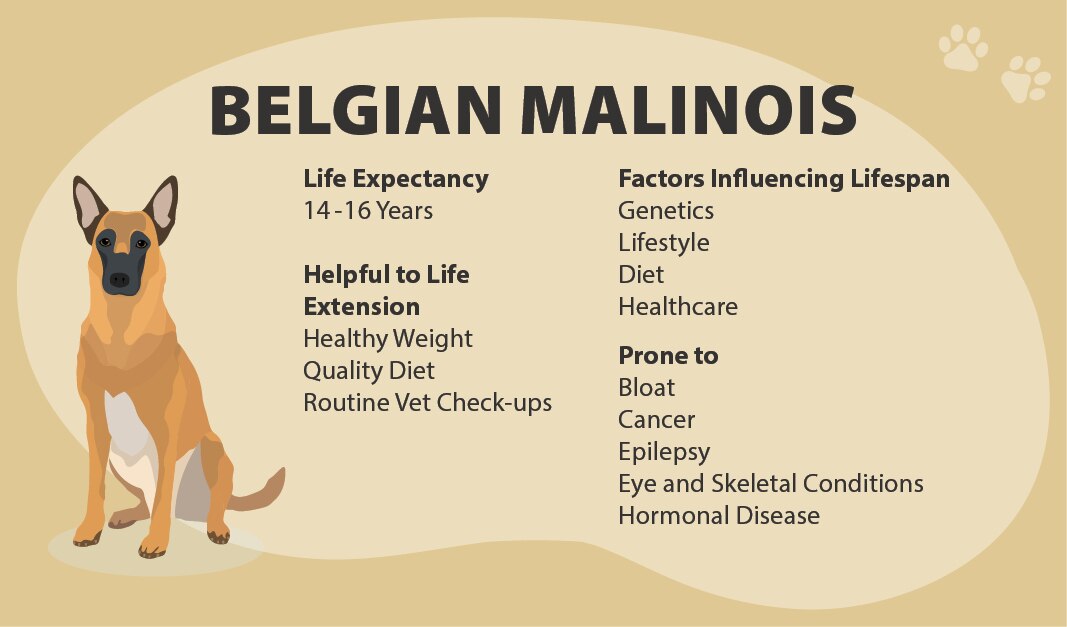
The typical lifespan of a Belgian Malinois is 14 to 16 years.2 But individual genetics, along with lifestyle, diet and healthcare, can all help determine a dog’s lifespan. Maintaining a healthy weight, feeding them a quality diet and keeping up with routine vet checkups can help your Mal live a long, healthy and active life.
Choose a high-quality dog food with a nutrition profile that’s approved by the Association of American Feed Control Officials (AAFCO) and tailored to your Belgian Malinois' current stage of life. If you opt for a homemade diet, be sure to check with your vet about making sure all of their nutritional needs are met.2
With all of the training sessions you’ll be doing with your Mal, you’ll need to be careful not to overdo it on the treats. Holding back some of their daily kibble to use in training, or giving them healthy, dog-safe fruits and veggies instead of high-calorie commercial dog treats, can help to keep your Mal at a healthy weight.2
Generally, the Malinois is a healthy breed.2 However, despite the efforts of ethical breeders to screen out hereditary health issues, some issues can still occur. Here are some possible health issues to be aware of.
Bloat
Also known as gastric dilatation and volvulus, or GDV, bloat occurs when gas fills the stomach, causing it to flip over and twist on itself. All large, deep-chested dogs are prone to this serious and potentially fatal condition. Feeding your dog two or more smaller meals throughout the day and mixing dry food with canned can help reduce the likelihood of bloat. There’s also a potential surgical procedure vets can do for dogs with a higher than average predisposition to prevent the stomach from twisting.10
Cataracts
A cataract is a cloudy film that forms on the lens of the eye, impairing vision. While cataracts can develop in any dog of any age, those with a genetic predisposition are most susceptible. In many cases, surgical removal can restore vision.11
Epilepsy
Mals are prone to idiopathic epilepsy, a hereditary seizure disorder with no known cause. Seizures usually manifest by 3 years of age, and they can usually be managed with medication, which an epileptic dog will need to take for their entire lives.12
Hemangiosarcoma
Hemangiosarcoma is an aggressive cancer that attacks the blood vessels and causes internal bleeding. It is often challenging to recognize before it reaches an advanced stage, making treatment difficult, and the prognosis is usually poor. However, when it is caught early enough, aggressive chemotherapy and radiation can sometimes help extend the dog’s life.13
Hip and elbow dysplasia
Hip dysplasia and elbow dysplasia are genetic bone malformations that prevent the ball of the joint socket from fitting properly into the joint, leading to joint stiffness and osteoarthritis later in life. Although these can often be managed with proper nutrition and lifestyle adjustments, severe cases may require surgical correction.12
Hypothyroidism
Hypothyroidism occurs when the thyroid gland is underactive and doesn’t produce enough thyroid hormone, which regulates metabolism and other internal systems. Symptoms include dry and dull skin and coat, lethargy and weight gain. This condition can be managed with medication.12
Progressive retinal atrophy
Hereditary progressive retinal atrophy is a degenerative disease that affects the eye’s photoreceptor cells. It is typically diagnosed in puppies by 3 months of age, eventually leading to total blindness. While there is no treatment, the condition is not painful, and pups with this condition usually adapt well to life without vision.14
Buying or Adopting a Belgian Malinois
AKC-registered Belgian Malinois puppies from a reputable breeder range in price from $1,200 to $2,500. The price typically includes early healthcare, vaccinations and genetic testing.15
You can find Mals of all ages, as well as Malinois mixes, at animal shelters and Belgian Malinois rescue organizations. The American Belgian Malinois Rescue can connect you with Mals in need of rescue across the nation. The adoption fee generally starts around $325.16
Additionally, you might also consider adopting a retired military dog. Mission K9 Rescue, based in Houston, has retired military service Mals available for adoption.
Frequently Asked Questions About Belgian Malinois
Still have questions about Mals? Here are answers to some commonly asked questions about this dog breed.
CareCredit Credit Card Financing for Dogs
Taking good care of your pet's well-being from nose to tail is essential. Make sure to stay up to date on their regular checkups at the vet to help keep your pet happy and healthy for a lifetime of love. You can use your CareCredit credit card for pet care throughout the year for routine veterinary services as well as emergencies and surgeries.* Use our Acceptance Locator to find a veterinarian near you that accepts CareCredit.
CareCredit is there for you and your pet every step of the way; continue your wellness journey by downloading the CareCredit Mobile App to manage your account, find a provider on the go and easily access the Well U blog for more great articles, podcasts and videos.
In addition to pet care, you can also use your CareCredit credit card for dentistry, cosmetic, vision, hearing, health systems, dermatology, pharmacy purchases, spa treatments and so much more within the CareCredit network. How will you invest in your health and wellness next?
Author Bio
Jean Marie Bauhaus is a freelance writer and novelist who has been writing pet content since 2013. Her work has appeared on Forbes.com, Hill's Pet, Chewy, AKC.org and more.



